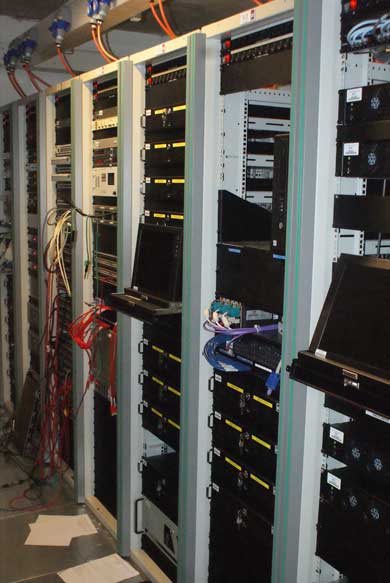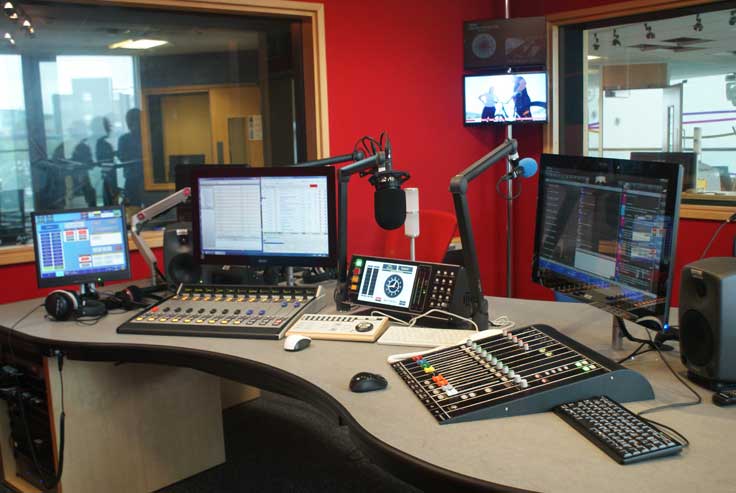It is difficult to keep up and record the technical developments in an age of computer based technology where audio is handled not in the analogue domain but digitally.
In BBC Local Radio PC based playout studio systems came in with the Finnish Radioman software in 2001. This was presented to the Mk III desk as analogue and handled in the studio as disc, tape and cart audio had for decades before. Operationally Radioman did away with the supermarket shopping basket which many presenters had used to carry their records, tapes, carts and running order from their office to the studio for their programme. With Radioman only listeners' correspondence and perhaps a review book were the only items which needed to be taken into the studio as all the audio including music, interviews (previously edited in the office at the presenter's desk), jingles and promos were accessed from the central server together with the programme's running order which was also integrated into the playout system.

(Radio Leicester's shown, right.)

The logical extension was to store one copy of each piece of music and audio at a single location with a reserve back-up at another site - never forgetting the principle of belt and braces - interconnected by high-speed data lines to each station and as local radio prepares to celebrate half a century of serving communities by broadcasting output tailored with their particular interests and needs that is what is happening in 2017. First trialled at Radio Northampton in 2014 VILOR (VIrtual LOcal Radio) is being rolled out throughout the country with each individual station drawing on central resources to support its local output.
(left, also at Radio Leicester, the single bay required for the VILOR system seen during installation.)
When local radio started in 1967 rotating technology in the form of grams, tape machines and later cartridge machines were the order of the day. Live outside broadcasts were relayed back to the studio on a UHF analogue radio link from the radio car or by GPO music and control lines. Recordings were made on valve operated Revox G36 tape recorders. Today the only thing left which visibly rotates in the studio is the presenter's chair. OBs arrive via a satellite car or ISDN lines, though even this digital technology is soon to be phased out, replaced perhaps by audio sent over the internet? Who knows? Along the way CDs, MiniDisc and DAT have come and now, to all intents and purposes, gone.

On the presenter's left is the BNCS screen by which the studio can be routed to the transmitters and DAB feeds. These will normally be the local FM transmitter and digital feed to the DAB service but when local sports teams are in action the system allows the regular programme and OBs to be split across more than one platform including the AM transmitter.
The next screen displays the audio database and programme running order and the mixer below handles external and repro sources.
Between the mixer units is the control for the playout system enabling the presenter to scroll through their running order for the programme, music tracks and jingles with the small screen above showing virtual indicator lamps, clock, PPM, intercom and talkback buttons.
The right-hand mixer controls the studio mics, local TBU and monitoring. The right-hand screen shows listeners' incoming telephone calls lined up ready for selection.
It is quite possible for a complex programme to be self-driven though normally some functions such as lining up external contributors and filtering incoming phone calls are handled by production staff in an adjacent area.
Meanwhile, in the real world ageing members of the original pioneering local radio stations are gearing up for a nostalgiafest of how liberating it was to be broadcasting in the good old days, largely freed of the BBC bureaucracy of the 1960s, and ploughing their own furrow appropriate to the listeners in the area in which they found themselves broadcasting. Technology has developed and been embraced by the broadcasters over the years but the aim has remained constant. Whether the end result is better or worse than fifty years ago only history will decide.

